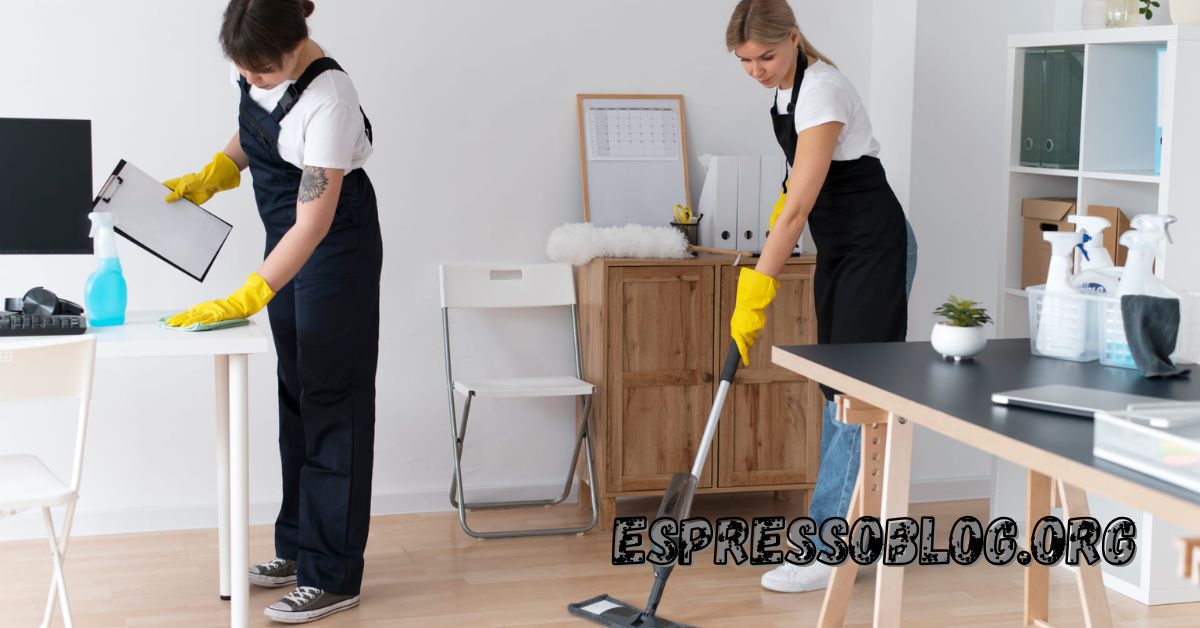Keeping a business clean is about more than just appearances—it directly impacts employee health, customer satisfaction, and overall productivity. However, maintaining a spotless environment requires a structured approach. A cleaning schedule tailored to a company’s specific needs ensures that no area is neglected and that cleaning tasks are performed consistently.
Whether it’s a corporate office, a retail space, or a large commercial facility, having a well-thought-out cleaning routine can help businesses operate more efficiently. From daily maintenance to deep cleaning, creating the right plan is key to sustaining a professional and hygienic environment.
The Importance of a Structured Cleaning Schedule
Inconsistent cleaning can lead to clutter, dust buildup, and even potential health hazards. A well-planned schedule helps businesses:
- Ensure all areas receive proper attention rather than cleaning only when problems arise.
- Improve workplace efficiency by keeping workspaces organized and free from distractions.
- Enhance the company’s reputation by maintaining a professional and welcoming atmosphere for visitors.
A structured plan keeps cleaning tasks manageable and prevents minor issues from turning into costly problems.
Step 1: Identifying High-Traffic and High-Priority Areas
Not all areas of a business require the same level of attention. Spaces with heavy foot traffic accumulate dirt and germs faster, requiring more frequent cleaning.
High-Traffic Areas That Need Frequent Cleaning:
- Entrances and lobbies – The first impression for visitors and customers.
- Restrooms – Require constant sanitation to maintain hygiene.
- Break rooms and kitchens – Can become breeding grounds for bacteria if neglected.
- Meeting rooms and workstations – Surfaces are touched frequently and need routine disinfection.
By identifying priority areas, businesses can allocate cleaning efforts effectively.
Step 2: Determining Cleaning Frequency
Different cleaning tasks require different levels of frequency. Some should be done daily, while others may only be necessary on a weekly or monthly basis.
Daily Cleaning Tasks:
- Wiping down workstations and shared surfaces.
- Emptying trash bins to prevent odors.
- Vacuuming or sweeping floors in high-traffic areas.
- Disinfecting restrooms and replenishing supplies.
Weekly Cleaning Tasks:
- Deep cleaning carpets and upholstery.
- Sanitizing kitchen appliances and communal dining spaces.
- Polishing floors and disinfecting light switches and door handles.
Monthly Cleaning Tasks:
- Window cleaning for a streak-free, polished look.
- Dusting air vents and ceiling fans to improve air quality.
- Decluttering storage areas and organizing files or supplies.
Setting clear expectations for cleaning frequency ensures consistency and keeps the workspace in top condition.
Step 3: Assigning Responsibilities
Businesses need to decide whether to handle cleaning in-house or work with professional janitorial services. Each option has its benefits.
Internal Cleaning Responsibilities:
- Encouraging employees to maintain their personal workspaces.
- Creating a rotating cleaning schedule for communal areas.
- Providing access to cleaning supplies for quick spill cleanup.
Professional Cleaning Services:
- Handling deep cleaning tasks that require specialized equipment.
- Ensuring sanitation standards are met consistently.
- Managing after-hours cleaning to avoid workplace disruption.
Alpine Cleaning Company provides commercial cleaning services designed to meet the needs of different industries, ensuring businesses maintain a clean and healthy environment.
Step 4: Choosing the Right Cleaning Products and Tools
Not all cleaning products are created equal. The right supplies improve efficiency and contribute to workplace safety.
Essential Cleaning Supplies for Businesses:
- Disinfectant wipes and sprays for high-touch surfaces.
- Microfiber cloths that trap dust and bacteria.
- HEPA filter vacuums to improve air quality by capturing fine particles.
- Non-toxic, eco-friendly cleaning solutions for safer indoor air.
Using the right tools ensures cleaning is both effective and environmentally responsible.
Step 5: Incorporating Carpet Cleaning into the Schedule
Carpets often go unnoticed, yet they accumulate dirt and allergens that affect workplace hygiene.
When to Schedule Carpet Cleaning:
- Daily: Vacuuming to remove dust and prevent buildup.
- Monthly: Spot treatment for stains and high-traffic areas.
- Quarterly: Deep cleaning using steam or dry-cleaning methods.
Regular carpet maintenance enhances indoor air quality and extends the lifespan of flooring.
Step 6: Ensuring Restrooms Stay Clean at All Times
Restrooms require more frequent attention than other areas to maintain hygiene.
Best Practices for Restroom Cleaning:
- Stock paper towels, toilet paper, and hand soap daily.
- Disinfect sinks, toilets, and door handles multiple times a day.
- Address any odors immediately to keep restrooms fresh.
Clean restrooms leave a lasting impression on employees and customers alike.
Step 7: Implementing an After-Hours Cleaning Routine
Cleaning during business hours can be disruptive. Many businesses opt for after-hours cleaning to ensure a spotless environment without interfering with daily operations.
Tasks Typically Handled After Hours:
- Mopping and deep-cleaning floors.
- Emptying all trash bins and replacing liners.
- Sanitizing office desks and shared surfaces.
Having a nighttime cleaning routine ensures the workspace is ready for the next workday.
Step 8: Evaluating and Adjusting the Cleaning Schedule
A cleaning schedule should be flexible and evolve based on workplace needs.
Signs It’s Time to Adjust the Cleaning Plan:
- Increased dust accumulation or unpleasant odors.
- Higher levels of employee absenteeism due to illness.
- More frequent complaints about workplace cleanliness.
Regular evaluations help businesses refine their cleaning strategy for maximum effectiveness.
Final Thoughts: A Clean Business is a Successful Business
A well-maintained workplace promotes productivity, ensures employee health, and enhances a company’s professional image. Creating a structured cleaning schedule ensures that no area is overlooked and that businesses maintain consistent hygiene standards.
With a combination of in-house efforts and professional cleaning services, businesses can achieve a level of cleanliness that supports long-term success. A clean environment isn’t just a luxury—it’s a necessity for maintaining a thriving workspace.
Also Read: Open House Perth 2024: A Celebration of Architecture

